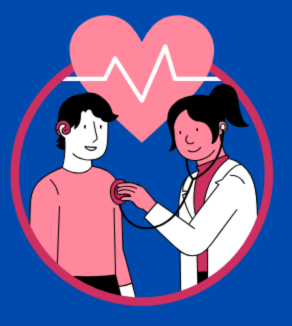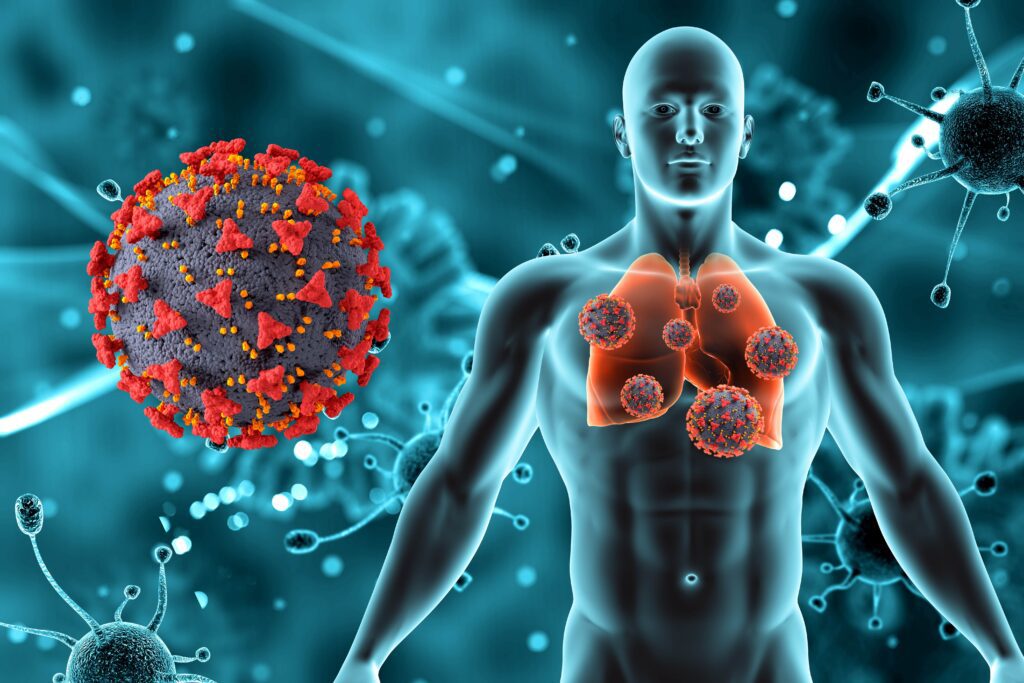Tuberculosis (TB) is a contagious bacterial infection caused by Mycobacterium tuberculosis. Primarily affecting the lungs, it can also spread to other parts of the body, including the kidneys, spine, and brain.
TB has been a major public health issue for centuries and remains a leading cause of morbidity and mortality globally.
Understanding the communicable nature of tuberculosis is crucial for public health efforts to control and ultimately eradicate the illness.
Pathophysiology of pulmonary tuberculosis :
TB is transmitted through airborne particles released when an infected person coughs, sneezes, speaks, or sings. Inhaled bacilli reach the alveoli of the lungs, where they are engulfed by macrophages.
The immune response determines the outcome:
Latent TB Infection (LTBI) :The immune system contains the bacteria, which remain dormant. LTBI is asymptomatic and non-contagious.
Active TB Disease : If the immune response is insufficient, the bacteria multiply and cause active disease. This stage is symptomatic and contagious.
Symptoms of Pulmonary Tuberculosis(TB):
- Persistent cough (lasting more than three weeks
- Hemoptysis (coughing up blood)
- Chest pain
- Fatigue and weakness
- Weight loss
- Fever
- Night sweats
Extrapulmonary TB:
Varies depending on the affected organ
- TB meningitis : headaches, confusion, and neck stiffness
- Skeletal TB : pain in the affected bones or joints
- Genitourinary TB : dysuria, hematuria
- TB lymphadenitis : swollen lymph nodes
Diagnosis of TB
To check for tuberculosis, your doctor may start with a physical exam and medical history, including listening to your lungs and examining for swollen lymph nodes.
Laboratory Tests:
Tuberculin Skin Test (TST): Measures skin induration after intradermal injection of purified protein derivative (PPD).
Interferon-Gamma Release Assays (IGRAs): Blood tests measuring immune response to TB antigens (e.g., QuantiFERON-TB Gold).
Imaging :
Chest X-Ray: Identifies lung abnormalities indicative of TB.
CT Scan: Provides detailed images, particularly useful for extrapulmonary TB.
Microbiological Tests:
Sputum Smear Microscopy: Detects acid-fast bacilli (AFB).
Culture: Confirms TB diagnosis and tests drug susceptibility.
Molecular Tests: Rapid detection of TB and drug resistance (e.g., GeneXpert MTB/RIF).
Tuberculosis Treatment
First-Line Anti-TB Drugs :
– Isoniazid (INH)
– Rifampicin (RIF)
– Ethambutol (EMB)
– Pyrazinamide (PZA)
Treatment Phases:
Intensive Phase Typically 2 months, using all four drugs.
Continuation Phase: Usually 4 months, using isoniazid and rifampicin. Directly Observed Therapy (DOT) Ensures adherence by having healthcare workers supervise medication intake.
Drug-Resistant TB:
Multidrug-Resistant TB (MDR-TB) Resistant to at least isoniazid and rifampicin. Extensively Drug-Resistant TB (XDR-TB) MDR-TB with additional resistance to fluoroquinolones and at least one second-line injectable drug. Requires longer, more complex, and more toxic treatment regimens.
Prevention
- Vaccination: Bacillus Calmette-Guérin (BCG) Vaccine Provides partial protection, mainly used in countries with high TB prevalence.
- Infection Control Measures :
– Isolation of active TB patients.
– Use of protective equipment by healthcare workers.
– Adequate ventilation in healthcare settings. - Public Health Strategies :
– Active case finding and contact tracing.
– Education and awareness campaigns.
– Strengthening health systems and improving access to care.
Epidemiology
– One of the top 10 causes of death worldwide.
– Over 10 million people fell ill with TB in 2019.
– Approximately 1.4 million TB-related deaths in 2019.
High-Risk Populations :
– People living with HIV.
– Individuals with compromised immune systems.
– Close contacts of TB patient — – People living in crowded conditions or with poor access to healthcare.
Challenges and Future Directions
1. Drug Resistance:
– MDR-TB and XDR-TB complicate treatment and control efforts.
2. Co-Infection with HIV:
– TB is a leading cause of death among people with HIV.
3. Diagnostic and Therapeutic Innovations:
– Development of rapid, accurate diagnostic tools.
– New and shorter treatment regimens.
– Improved vaccines.
4. Socioeconomic Factors:
– Addressing poverty, malnutrition, and inadequate healthcare infrastructure.
5. Research and Development:
– Ongoing research to understand TB pathogenesis and immunity.
– Development of novel therapeutics and vaccines.
Tuberculosis remains a significant global health challenge, necessitating a multi-faceted approach for its control and eventual eradication. Continued investment in research, public health initiatives, and global cooperation are crucial to combat this enduring disease.
Here are some key points about TB transmission:
1. Airborne Transmission: TB spreads through airborne particles, not through physical contact. Prolonged exposure to an infected person increases the risk of transmission.
2. Latent vs. Active TB: People with latent TB infection (LTBI) do not spread the disease because the bacteria are not active. Only individuals with active TB disease can transmit the bacteria to others.
3. Risk Factors: Close contacts of individuals with active TB, such as family members or coworkers, are at higher risk. Crowded living conditions, poor ventilation, and prolonged exposure increase the likelihood of transmission.
4. Infection Control: Effective TB control measures, such as early diagnosis, treatment of active TB cases, and the use of masks and proper ventilation in healthcare settings, are essential to prevent the spread of the disease.
FAQ for Tuberculosis :
- What is the first sign of tuberculosis ?
Common symptoms include a cough that lasts more than three weeks and may produce mucus (phlegm) or mucus containing blood. feeling tired or drained. a high fever or nocturnal (night) sweats.
- Is TB communicable disease ?
Yes, tuberculosis is a communicable disease. It is primarily transmitted through the air when someone with active tuberculosis in their lungs or throat coughs, sneezes, speaks, or sings. Tiny droplets containing Mycobacterium tuberculosis germs are released into the air, where they can be inhaled and cause infection.


